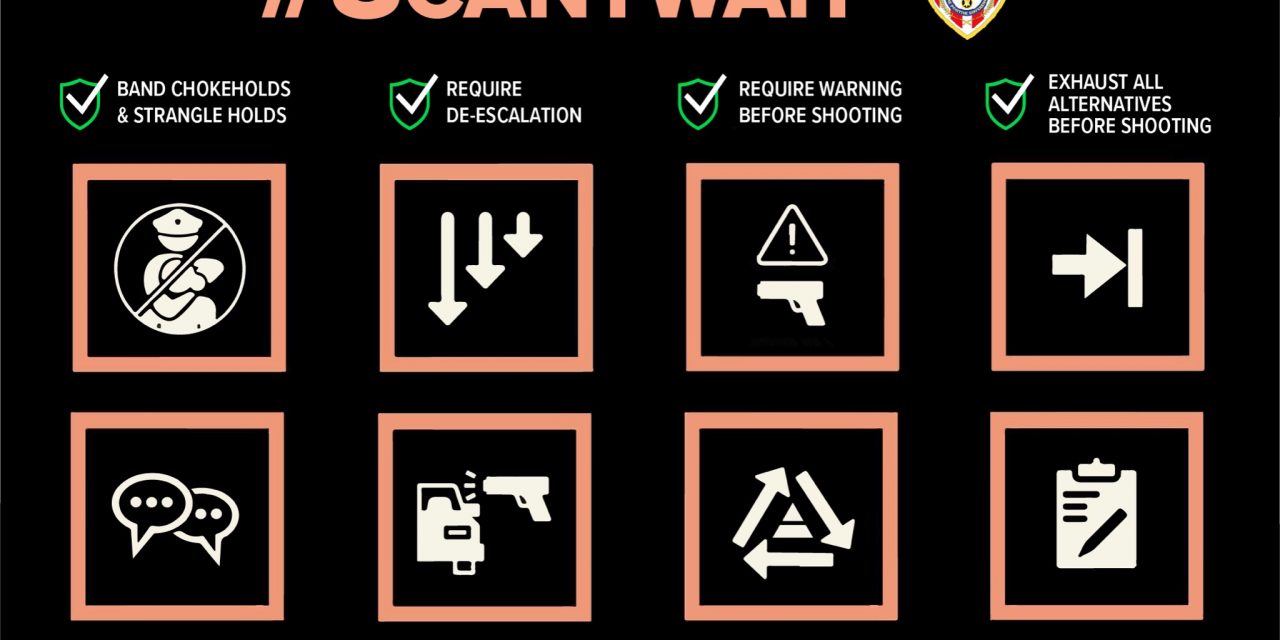In the nearly two weeks since police and residents walked shoulder to shoulder through Downtown Kissimmee to protest acts of police brutality like the one that led to the tragic death of Mr. George Floyd in Minneapolis, there has been dialogue with a number of citizen groups on how the Kissimmee Police Department trains and operates.
Those citizens proposed eight procedural rule changes for law enforcement to reduce police violence. KPD Chief Jeff O’Dell said this week he’s proud to report that those proposed recommendations “have been incorporated within our policies and training curriculum for years, and for more than three years we have incorporated de-escalation and intervention tactics into our scenario-based training exercises.”
Friday, we broke down four of those proposals, and KPD’s responses to them. Here’s a look at the rest of them.
Duty to intervene:
The Kissimmee Police Department initiated a formal Peer Intervention Program over 3 years ago. Officers participate in yearly de-escalation training scenarios where they have to demonstrate successful intervention tactics. Employees have an affirmative duty to intercede to prevent the use of excessive force if the employee has reason to know excessive force is being used and there is a realistic opportunity to intervene to prevent harm. The action required by the employee shall depend on the circumstances of the incident. Appropriate action may include, but is not limited to: verbal or physical intervention, immediate notification to a supervisor, a direct order by a supervisor to cease the use of excessive force. Beyond situations involving force, the Peer Intervention program is designed to create a culture within the organization that does not allow for officers to be bystanders in any circumstance they observe inappropriate conduct.
Ban the use of choke holds and strangle holds:
As simple as it sounds. Those do not even show up in the Use of Force Continuum, which begins below:
The Kissimmee Police Department has a detailed policy that outlines when officers can use force.
Employees shall use only the force reasonably necessary to effectively bring an incident under control in accordance with the rights afforded by the United States Constitution and the constitution and laws of the State of Florida. The policy and annual training provides the officers with a force continuum guideline that assists our officers in determining the appropriate level of force based on the level of resistance encountered.
The Response to Resistance Continuum Guideline factors in:
Severity of Crime;
Threat level;
How subject was attempting to evade arrest;
Subject’s age, sex, size, skill level, agitation level, or if there’s multiple subjects or members;
Known or perceived physical abilities, violent or mental history or perceived mental incapacity;
Imminent danger to employee or any individual;
Characteristics of being armed;
Alcohol/drug influence;
Subject handcuffed;
Other environmental factors.
As part of the Response piece, the employee should call for additional members.
Technique continuum features steps:
Passive Resistance (verbal direction)
Soft Control (techniques that have a minimal potential for injury to the subject):
* Pressure Points
* Writs Locks
* Arm Bars
* Compression Techniques
* Chemical Agents
* Diversionary Device
Active Resistance (actions intended to neutralize escape of arrest; action is not likely to cause injury)
Hard Control (actions that could result in greater injury to the subject, if the subject resists)
* Forearm and knee strikes
* Open and closed hand strikes
* Baton strikes
* Kicks
* Takedowns
* Impact Weapons
* Electronic Control Devices
* K-9 Apprehension
Aggressive Resistance (the subject’s action is likely to cause injury)
Intensified Techniques (necessary to overcome the actions of the subject, there is strong probability of injury being incurred)
* Techniques necessary to overcome actions of a subject short of deadly force.
Deadly Force Resistance (the subject’s actions are likely to cause imminent danger of death or great bodily harm to the employee or another person.)
Deadly Force (employee’s actions may result in death or great bodily harm to the subject).
We thank the Kissimmee Police Department’s access and openness into its guidelines for the benefit of the education of the public.

















